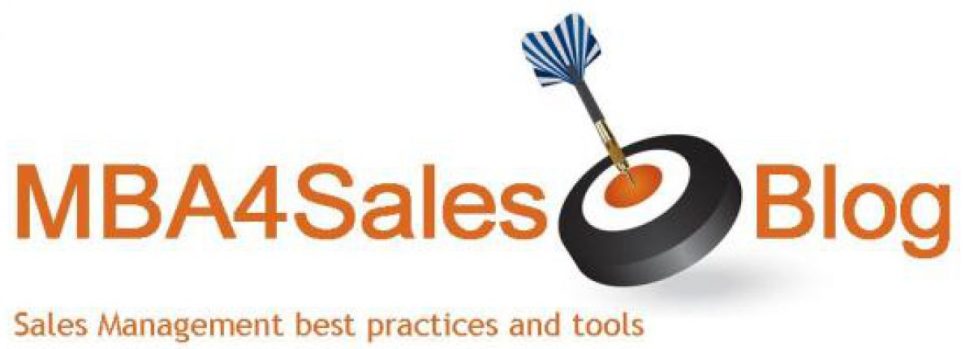CRM has had a huge impact on executive perceptions about what it really takes to manage sales teams. I credit CRM vendors for selling the benefits of CRM while minimizing the extensive planning and implementation effort that went into accruing those benefits. (Hence, the phrase, “Never confuse selling with delivery!”)
Because of this, I think that senior management and Sales leaders mistake what is done in CRM for sales management. Yes, you can monitor sales pipeline and activities in CRM, but what did you do to establish the fundamentals behind these outputs before you started using the tool?
I would argue that managing Sales has nothing to do with CRM at all. After all, there was Sales before there were computers and CRM tools. Certainly CRM helps you perform sales and management tasks more efficiently, but it’s only a tool. It’s not the endgame.
CRM Shortcuts Reality
In a lot of cases, CRM adoption is a “ready-fire-aim” scenario. First and foremost, managers want to build the pipeline. So, information is forced into the system by sales people (who feel it will be used against them) until management has their pipeline. Along the way, important sales management best practices are minimized or ignored:
- What are the actual steps in the sales cycle that represent the firm’s interaction with customers? When I go into client sites, the first thing I look at is how they have defined the stages in CRM to correspond to their own sales cycles. In some cases, the default CRM task list is still being used, as if the CRM vendor’s default sales process provided some insight into the firm’s sales efforts. That is not the real sales cycle.
- How is the system being used to facilitate faster/better/bigger deals? If there is already a pipeline, is it all over the place in terms of the certainty of success? Why is this important? Because even though Probability is linked to the sales cycle stage in most CRM systems, it’s not a measure of how the funnel actually works. If a deal in the pipeline is at Qualification Stage and Probability is set to 25%, does that really mean that one of every four deals landing in that stage are going to close? Probably not.
- How do sales people use CRM to communicate with customers and internal resources? This is a good indicator to show whether CRM is a meaningful tool or if it’s an afterthought. Most of the time, the real activity of sales people is not recorded in CRM, but in e-mail. If e-mail and CRM are not integrated, then a lot of communications potentially important to a deal may only reside on the sales person’s laptop. The real question is, does management see the communications, the meetings scheduled, the feedback received from clients? What about other internal stakeholders, like Marketing or Product Management?
Although not complete list, these examples illustrate three critical elements of sales process management that are shortcut because the perception is that CRM “takes care of it”. Nothing could be further from the truth.
Sales Cycle
Every business that sells products and services goes through a unique sales cycle that depends on the quality of the selling effort, communications with the customer, the abilities of the individual sales person and many other factors. These factors must be considered and understood regardless of any CRM implementation. CRM tasks must be aligned with the real process for pipeline numbers to accurately predict revenue.
Timing
One of the most important strategies sales managers can use to improve performance is to manage the timing of sales activities and the aging of opportunities. It’s hard to improve a process without understanding the timing of activities and how that timing impacts a rep’s ability to close an opportunity. The probabilities and timing of sales tasks needs to be aligned with reality in order to help management improve sales velocity. Otherwise, you have no way to benchmark improvement, nor do you know what is causing deals to age.
Communications
Much of the communication value between sales people and customers goes away if not recorded and shared with internal resources. In many organizations, it’s necessary to plan for these communications, recognizing that everyone involved must understand what is going on to support the sale. When stakeholders in the sales process don’t understand what’s going on, communication gaps occur that ultimately sabotage sales efforts. These communication gaps cause delays, create misunderstandings or misalignment of activities in a sales cycle, and in the worst case, produce adversarial relationships between sales and the stakeholders who are supposed to help them win deals.
Intentionality
I believe that all of this results from management’s intentionality about selling. Information access and automation are perceived as a convenient shortcut to avoid defining a real sales process and communications in the interest of saving time and generating results. Good financial executives don’t plan to run a company without a budget. Why then is sales planning treated with such ambivalence?
In business, communicating results is often considered as important what it takes to achieve them. Good sales management relies on tackling fundamental issues about what it takes to produce results. Even if you currently have a CRM system, it’s not too late to ensure that sales process and practices are addressed before information access. Access to bad information is actually worse than not having it.
Have the real practices in your sales organization been overlooked using CRM?
